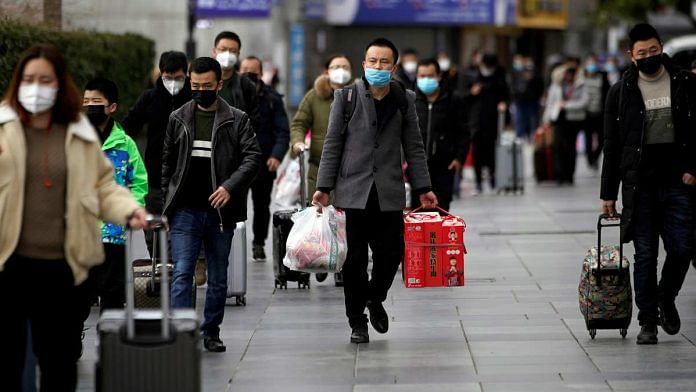Beijing: It’s been more than two months since 12 December, the day doctors first noticed a Chinese patient display symptoms of the highly-infectious coronavirus that has claimed more than 1,700 lives across the globe. In the weeks following that early case, authorities missed one chance after another to contain the outbreak.
The censorship on 1 January of eight doctors who tried to issue an early warning has become a lightning rod for public anger over the government’s slow initial response. But it’s now emerged that there were at least four other key moments in which authorities could’ve slowed the spread of the virus if they had acted more quickly to educate the public and limit travel and mass gatherings.
Even after the first death from the pathogen on 9 January, Chinese officials continued to assure the public that the virus wasn’t serious and that the situation was under control. The virus has now infected more than 71,000 people, devastating the 60 million people of Hubei province and shutting down large parts of the Chinese economy.
Here are four opportunities China missed to stem the virus’s spread in the crucial first month after it was first observed in a patient.
26 December: SARS-like virus detected
After cases began emerging in Wuhan, the capital of Hubei province in central China, Chinese scientists began studying the new disease. On 26 December, preliminary genetic sequencing data indicated the presence of a coronavirus related to severe acute respiratory syndrome, or SARS, according to a commentary paper in the Lancet medical journal published on 11 February.
It took 17 days before Chinese researchers alerted their peers around the world to the new pathogen by posting the genome sequence, which is needed to develop test kits that can identify the virus in patients.
The Lancet commentary stressed that the delay didn’t indicate an intentional cover-up, but highlighted the absence of mechanisms available globally to inform outbreak warning systems.
3 January: Human-to-human transmission concerns
The Chinese Center For Disease Control and Prevention began monitoring close contacts of infected patients in Wuhan on 3 January, according to a paper its researchers published in the New England Journal of Medicine on 29 January, a sign that human-to-human transmission was a concern by early January.
The paper itself concluded that human-to-human transmission had begun among close contacts in the middle of December.
Yet on 5 January, the Wuhan government said the illness didn’t appear to be spreading from human to human. On 15 January, the municipal health commission said it wasn’t ruling out the spread between people, citing a family cluster among the 41 cases reported at the time.
China only confirmed human-to-human transmission on 20 January, after the virus had already spread to Thailand and Japan. After the 29 January paper prompted some public backlash, the CDC said it was based on “retrospective inference” of data from 425 cases, which had already been made public.
7 January: Xi Jinping issues internal order
Chinese President Xi Jinping said he ordered top leaders on 7 January to contain the epidemic, according to the transcript of a speech he delivered on 3 February that was made public on 15 February. State media reports from 7 January don’t include any remarks from Xi on the epidemic.
Xi said he personally gave the order on 22 January to quarantine more than 60 million people in Hubei province, 15 days after he first discussed the outbreak with the Politburo Standing Committee, the body comprising China’s seven most powerful leaders. A travel ban was imposed in Wuhan at 10 a.m. on 23 January, barring people from leaving the city. Its mayor, who kept his job in a recent purge, later said about 5 million people had already left the city by that point.
Still, the fact that Xi was giving directives on containing the virus almost two weeks before he made his first public statement on the issue raises questions about why China’s top officials waited so long to take decisive action.
9 January: New coronavirus confirmed
Chinese state television confirmed on 9 January that the mysterious pneumonia outbreak that had already sickened dozens in Wuhan was caused by a previously unidentified coronavirus, the same family of viruses that include SARS, MERS-CoV and the common flu. Coronaviruses vary in severity and some can be easily transmitted from human to human while others can’t.
That week, the central government continued to reassure the public that the virus wasn’t serious, with prominent government respiratory expert Wang Guangfa saying that the illness was “preventable and controllable” and that symptoms were “mild.” It was later confirmed he was infected with the virus, and he said on 22 January he suspected he caught it through his eyes.
On 18 January, the Wuhan government hosted a Chinese New Year dinner for more than 40,000 families. The mayor defended the decision on 21 January by saying there was limited evidence of human-to-human transmission at the time.-Bloomberg
Also read: Big data won’t save you from coronavirus



